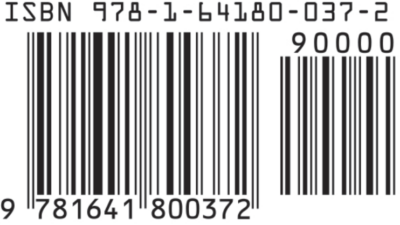Metadata by the numbers: What is an ISBN?

According to Bowker, the only company authorized to sell International Standard Book Numbers (ISBNs) in the U.S., the rate at which books are published continues to grow every year. ISBNs are used to track these releases. That’s why it’s important to understand what an ISBN is and what versions of your book need one.
What is an ISBN?
An International Standard Book Number, or ISBN, is the single most important identifying feature of a specific version of a book. Everyone involved with the production, distribution and sale of a book relies on the ISBN to identify and track specific titles. The ISBN is vital from the print-binder’s facility all the way to a retailer’s warehouse or bookstore’s shelf. Typically, a publisher assigns an ISBN to a manuscript as soon as it enters production. ISBNs also play a part in generating barcodes.
Why are some ISBNs 10 digits and others 13?
Any book published after uses a 13-digit ISBN to account for the ever-increasing number of published books. Ten-digit ISBNs are no longer being assigned. In fact, every 10-digit ISBN now has a corresponding 13-digit version to make sure it stays up to date.
Which book formats need a separate ISBN?
Every version of a book needs a specific ISBN to differentiate it. This means a hardcover and paperback edition of the same book have two separate ISBNs.
eBooks also need ISBNs, but not all eBook platforms require a separate ISBN. Apple iBooks, for example, require a separate, unique ISBN for eBooks published on that platform. Part of the reason for this requirement is that Apple iBooks are designed specifically for Apple devices and software and thus are considered a separate format.
For all other eBook formats, a singular ePub-specific ISBN can be used. Some eBook platforms don’t require an ISBN at all, in part to help facilitate easy access to self-publishing, but it’s still recommended to assign a general ePub ISBN to make it easy for retailers to track and eventually link the eBook to any printed versions of the book.
For more about different eBook formats, check out this post from the Metadata 101 series.
When does a book update need a new ISBN?
Publishers and authors often update a book after launch, ranging from small fixes from accumulated errata to the addition of a new endorsement. Generally, minor updates don’t constitute a new edition and thus do not require a new ISBN. A book is considered to be a new edition if at least 10% of the content has been changed or added in the update. This is a general rule and depends significantly on the actual content of the change. However, new versions of a book do require a new ISBN.
Why are ISBNs so expensive?
ISBNs are sold in large batches of thousands or more to publishers. Buying in bulk allows publishers to access ISBNs for a relatively low cost per individual ISBN. Individual authors seeking to purchase a single ISBN will be charged much more. Only authorized affiliates of the International ISBN Agency are allowed to sell ISBNs, which is why it’s usually not a good idea to purchase individual ISBNs from non-authorized resellers or other publishers. Non-authorized resellers will not be able to register the ISBN to the new owner, so anyone purchasing a non-authorized resale of an ISBN will find that the ‘Publisher of Record’ of their book will be listed as the original, non-authorized reseller.
Care to Read More?
This is part 9 of our Metadata 101 series
- Part 1
- How to create book metadata that will increase discoverability and enhance your marketing
- Part 2
- How to Write a Great Short and Long Description of your Book
- Part 3
- Determining binding, paper and color options for a printed book
- Part 4
- How to Request Endorsements, Forewords and Prefaces for New Books
- Part 5
- How do I find BISAC codes for a new book? 5 Tips for Success
- Part 6
- What are the different kinds of eBook formats? And, how do I make eBooks?
- Part 7
- Should we mention my dog? The Art of the Author Bio
- Part 8
- What should I call my book? The Art of Creating a Title and Subtitle
- Part 9
- Metadata by the numbers: What is an ISBN?